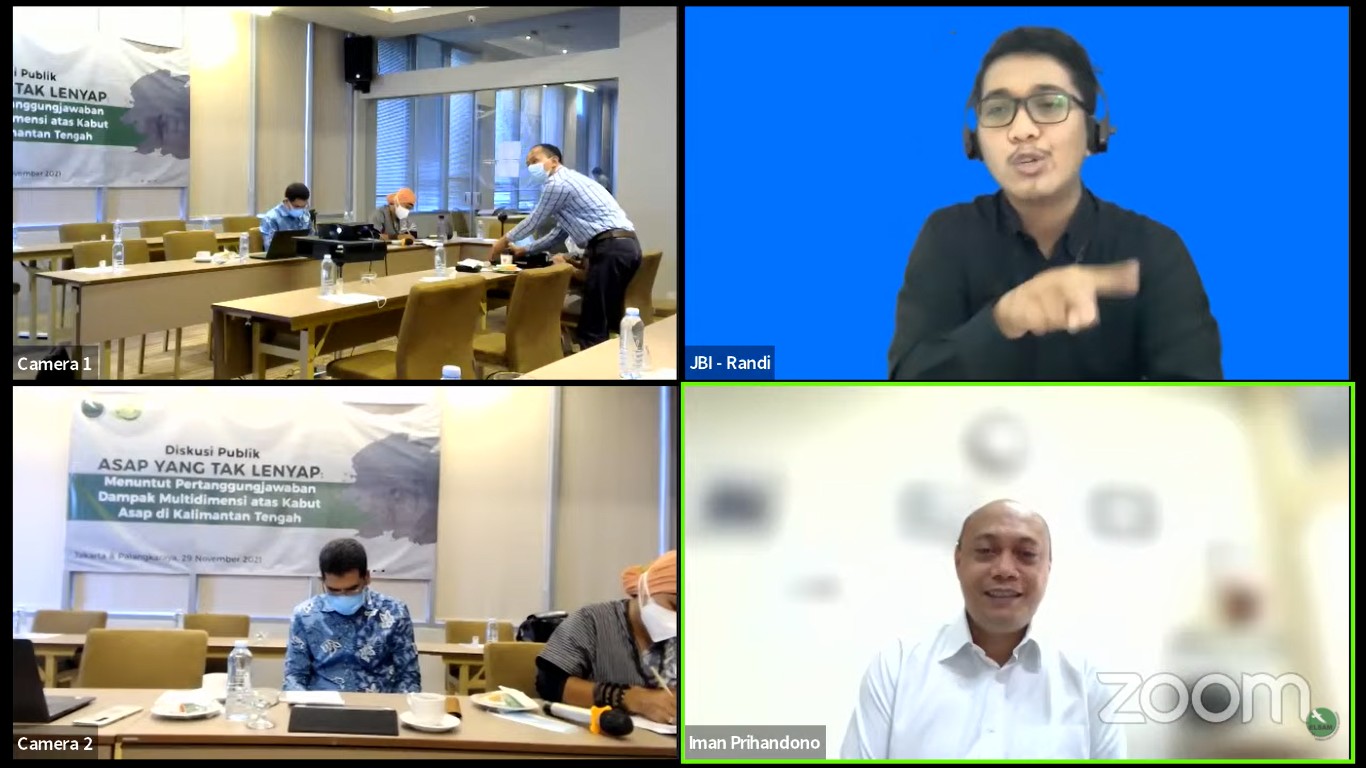UNAIR NEWS – The Institute for Policy Research and Advocacy (ELSAM) held a public discussion entitled “Non-Vanishing Haze: Demanding Accountability for the Multidimensional Impact of Haze Crisis in Central Kalimantan” on Monday, November 29, 2021. One of the speakers presented in the discussion was the Dean of Faculty of Law (FH) UNAIR, Iman Prihandono, PhD.
Iman said that the judicial process for accountability for the impact of the haze crisis caused by forest and land fires is not easy. Several verdicts, such as the Supreme Court verdict on forest and land fires in 2015, could hold the Indonesian government accountable for the conflict. However, the government is still reluctant to implement this verdict. He added, many verdicts that make the government and/or corporations accountable are not well-executed. As a result, the recovery for the victims becomes hindered.
Iman based the framework for the recovery of the haze crisis victims on the UNGPs (UN Guiding Principles) on Business and Human Rights, whose third pillar is the recovery in the event of human rights violations resulting from business. The forest and land fires are relevant to this convention because they are triggered by business activities such as palm oil. He also added that the impact of the fires is a human rights problem.
“In realizing this pillar, it is necessary for the National Human Rights Institution (NHRI) to play an active role. In the Indonesian context, the NHRI is represented by Komnas HAM (National Commission on Human Rights). Komnas HAM has several recovery mandates that are relevant to the haze crisis. They also have monitoring mandates such as investigations and examinations as well as mediating mandates,” said the expert on Business and Human Rights.
However, many challenges are encountered in the field because the haze crisis has various impacts on many people. Therefore, the recovery has to be different too. Iman also said that the classification and examination of corporate actors causing forest and land fires are also difficult due to the large number of corporations in forest and land fire areas in Central Kalimantan. Another problem that Iman pointed out is the difficulty of reaching an agreement through a voluntary mediation method among the disputing parties.
“Therefore, there is a need for a lot of further studies to optimize the role of Komnas HAM in overcoming the haze crisis so that victims can get justice. Another way is to follow new trends in the legal world, that is, climate change litigation or climate change proceedings. Corporations can be held accountable if their activities contribute to the climate crisis, which is a human rights problem in itself. In the context of the haze crisis, I think the trends are relevant because corporations can also contribute to the climate crisis. Thus, we can conclude that these methods view climate mitigation as a form of fulfilling human rights,” he concluded.
Author: Pradnya Wicaksana
Editor: Nuri Hermawan





